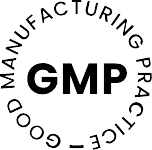Why do I need foods high in Omega 3?
As an essential fatty acid, you don’t produce omega 3. Instead, you need to eat certain foods to get enough omega 3 in your diet.
Omega 3’s are ‘good’ fats as they are polyunsaturated. There are several types of omega 3’s. The main ones are alpha-linolenic acid (ALA), eicosapentaenoic acid (EPA), and docosahexaenoic acid (DHA). You can find EPA and DHA in animal foods such as oily fish and algae. On the other hand, ALA is predominately in plant foods. It’s important to eat a range of omega 3 sources.
EPA, DHA, and ALA are all essential acids, so you have to get them from foods rich in omega 3 as you cannot make them in your body. ALA isn’t biologically active until it’s converted into DHA and EPA1. Although your body can convert ALA to EPA and DHA, it’s in very small amounts.
While we can get omega 3 from plant foods, especially algae, it’s thought that EPA and DHA from animal products are more effective as they have the most direct health benefits3. The most important omega 3’s are DHA and EPA. This is why you find that most omega 3 supplements contain DHA and EPA.
Omega 3 For The Heart, Brain, And Eyes
Eating foods high in omega 3’s may help to prevent strokes and heart attacks. There is strong evidence on the beneficial effect omega 3 fats have on heart disease4. Researchers are currently continuing to look into the benefits of omega 3 on other health conditions.
Several studies show that omega 3’s may fight inflammation. It also supports the healthy functioning of the heart, eyes, mood, mental health, skin, and hair.
Omega 3’s are an essential part of the cell membranes throughout the entire body. As the essential fatty acid is involved in so many aspects of your health, it may have several benefits.
20 best foods high in Omega 3
Here are 20 of the best food sources of omega 3 to add to your diet.
1. Salmon
Salmon is a great source of omega 3. Whether it’s wild, fresh, or farmed, it’s a nutrient-dense food to add to your diet. You can find just over 4g of omega 3 in 100g of fresh salmon. On top of this, it’s a good source of high-quality protein and includes vitamin D and B vitamins.
2. Mackerel
You can eat mackerel, either fresh or smoked. Add it to a risotto or pasta dish for an extra nutritional boost. The small fatty fish contains 4.1g of omega 3 per 100g. Mackerel is also rich in vitamin B12 and selenium.
3. Sardines
Sardines are another small oily fish that are great for a snack or starter. They are highly nutritious with just under 1.5g of omega 3 per 100g of sardines. You can find also plenty of nutrients like vitamin B12, vitamin D, and selenium.
4. Flax Seeds
Flax seeds are a fantastic whole food source of ALA. They are also rich in fibre, magnesium and other beneficial nutrients. One tablespoon of flax seeds contains just over 2g of ALA.
5. Chia Seeds
Chia seeds are another plant-based source of ALA. Add chia seeds to an overnight oats recipe or add a seed topping to your next salad. Chia seeds are highly nutritious and packed full of manganese, selenium, and magnesium.
6. Trout
Part of the salmon family, trout is another popular choice for a fish dish. Every fillet contains over 2g of omega 3’s. It’s a versatile fish that can be baked, grilled, stuffed, and even added to salads.
7. Seaweed and algae
Seaweed is a form of algae that grows in the sea. Popular in a lot of Japanese dishes, you can use seaweed in soups, stews, sushi rolls, and smoothies. In Wales, it’s popular in the form of laverbread for breakfast. Seaweed is a good plant-based source of omega 3’s as well as vitamin B12.
8. Sea Bass
Sea bass tends to have a more pungent, meatier taste. It’s low in fat but rich in omega 3 fatty acids and protein. Sea bass is also an excellent source of phosphorus and vitamin B12.
9. Edamame Beans
Half a cup of edamame beans is a good source of plant protein and ALA. They are ideal as a healthy snack and work well in a salad or side dish.
10. Walnuts, Hazelnuts and Pecans
If you’re looking for a quick snack, nuts are a good choice as they are rich in omega 3’s, especially walnuts. Walnuts provide 2.2g of omega 3 in just a 30g serving. The plant-based source works well topped on a salad, as a snack, or sprinkled on your breakfast.
If you’re thinking many of these foods high in omega 3 sound terribly fattening, well yes they are! That’s why so many people take Omega 3 supplements as well.
11. Hemp Seeds
Hemp seeds have a slightly sweet taste and are great on salads, oats, and smoothies. They are a fantastic source of omega 3 and full of protein, magnesium, iron, and zinc.
12. Herring
Herring is an excellent source of omega 3 fatty acids and is one of the top sources of vitamin D. It provides healthy fats and protein as well as iron and vitamin B12.
13. Anchovies
Anchovies are another type of oily fish rich in beneficial omega 3 fatty acids. It also contains selenium, niacin, and a decent amount of calcium. You can put anchovies in a pasta dish, on pizza, or eat them straight out of the tin.
14. Leafy Green Vegetables
Try adding Brussel sprouts, spinach, kale, or broccoli to your next meal. Leafy green vegetables are a good source of omega 3’s and full of nutrients like vitamin C, vitamin K, and potassium.
15. Oysters
You can find 435mg of omega 3 in 100g of oysters. Oysters are a great snack or appetizer. Interestingly, oysters contain more zinc per serving than any other food5.
16. Shrimp
Shrimp is rich in several nutrients and omega 3’s as well as a fantastic source of protein. Steam or grill your shrimp then add to your salad or pasta.
17. Fortified Foods
Some foods are fortified with omega 3’s like certain brands of eggs, yoghurt and, milk. This could help to increase your omega 3 intake, especially if you don’t like fish.
18. Nut and Seed Oils
Some nut and seed oils are good plant-based sources of omega 3. Try adding oils such as walnut, flaxseed, linseed, and soybean to your salad.
19. Swordfish
Swordfish is rich in omega 3, vitamin D, and selenium. It’s also a good source of protein, vitamin B12, and zinc.
20. Whitebait
You can eat whitebait whole with the head and tail still intact. Whitebait contains small amounts of omega 3 but plenty of beneficial iodine.
Foods High in Omega 3, or Super Strength supplements?
As you can see, one of the main foods high in omega 3 is fatty fish. Although there are some plant-based sources, it’s very difficult to get enough of both DHA and EPA through plant foods only. While some people love fish, it’s not to everyone’s taste.
On top of this, oily fish can contain low levels of pollutants that may build up in the body. Because of this, the NHS recommends that certain groups shouldn’t eat more than two portions of oily fish a week. These groups include girls and women who are either pregnant, breastfeeding or planning a pregnancy. This is why omega 3 fish oil supplements are so popular.
Our super-strength omega 3 fish oil supplements contain 660mg EPA and 440mg DHA per serving. The easy to swallow capsules feature the highest level of purity and are two to three times stronger than some other brands on the market.
All our supplements are non-GMO, gluten-free and made in the UK. The fish oil omega 3 capsules support normal functioning of the heart, brain, vision, mood, mental state, skin, and hair.
Omega 3’s may support several health benefits. While it’s always best to get your nutrients from foods high in omega 3, supplements are an easy way to up your daily intake. With capsules, you don’t have to think about the measurement. As an essential fatty acid, it’s crucial that you get your DHA and EPA.









